The Lord of the Rings: Gollum does the impossible and makes me excited to play as Gollum
In the Future Games Show gameplay reveal, we join Gollum as he ventures through Barad-Dur Tower
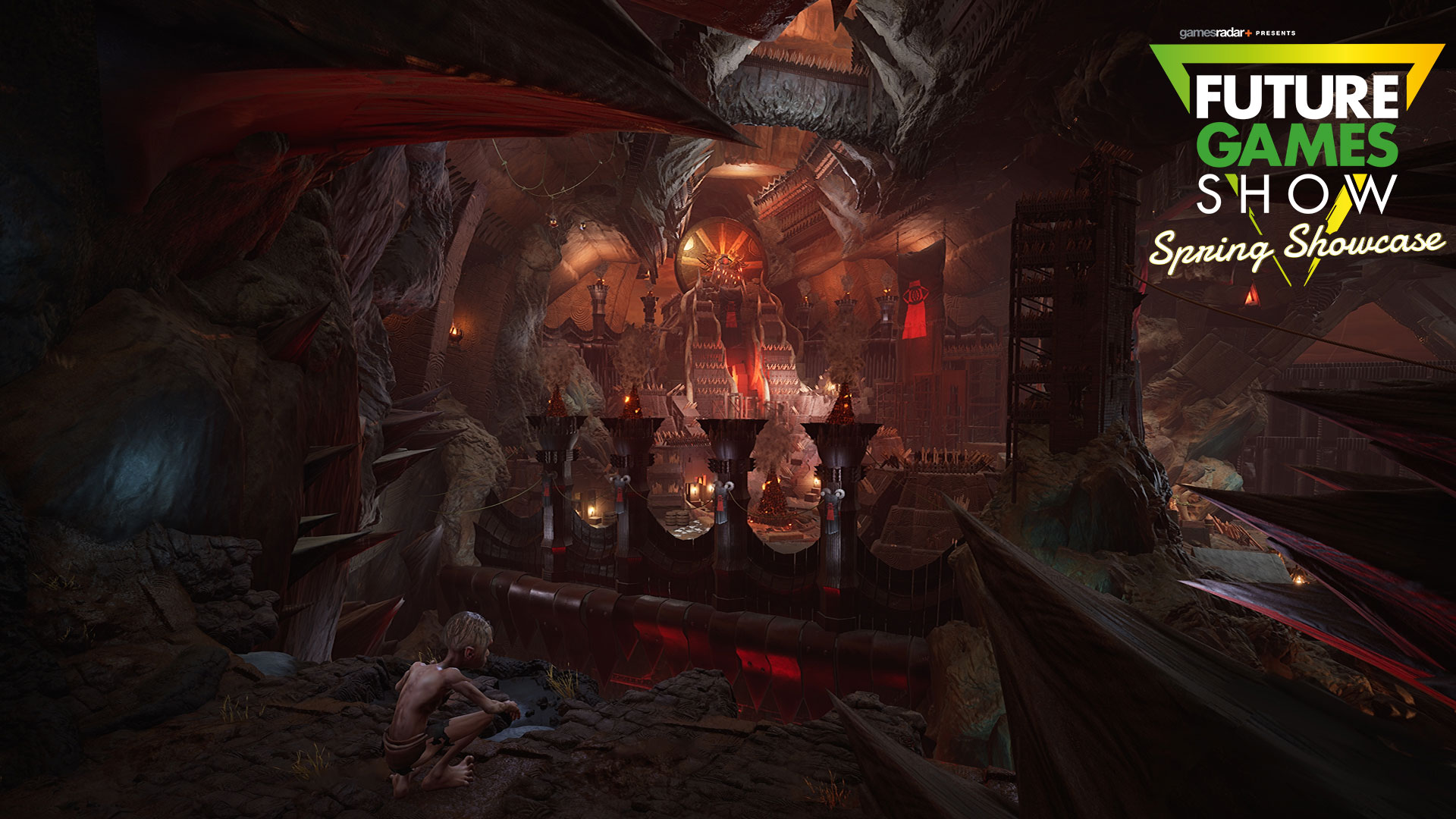
When I first see Tolkien's famous fictional character in Daedalic Entertainment's The Lord of the Rings: Gollum, he's running through a dark tunnel covered in tangled webs. Spiders are hot at his heels, and the unsettling scuttle of the arachnids echoes out as Gollum just barely escapes. Now, our protagonist has to navigate through an area under Barad-Dur Tower; Gollum is trying to reach a gate and regain his freedom after being captured by Sauron and forced into slavery. He may have escaped the spiders, but he's still far from safe.
The tower's verticality looms large over Gollum's small stature as he begins to jump across ledges and avoid being detected by roaming orcs patrolling the area. Gollum is certainly a very interesting and complex character in The Lord of the Rings, but when I think about a game set in Middle-earth, he isn't admittedly the first character I'd jump at the chance to play as. However, after seeing how the team at Dadelic has brought the character to life – using his personality and attributes to create a blend of parkouring and stealth-based gameplay – I've already warmed to the idea of experiencing Tolkien's world from Gollum's perspective.
Up on high
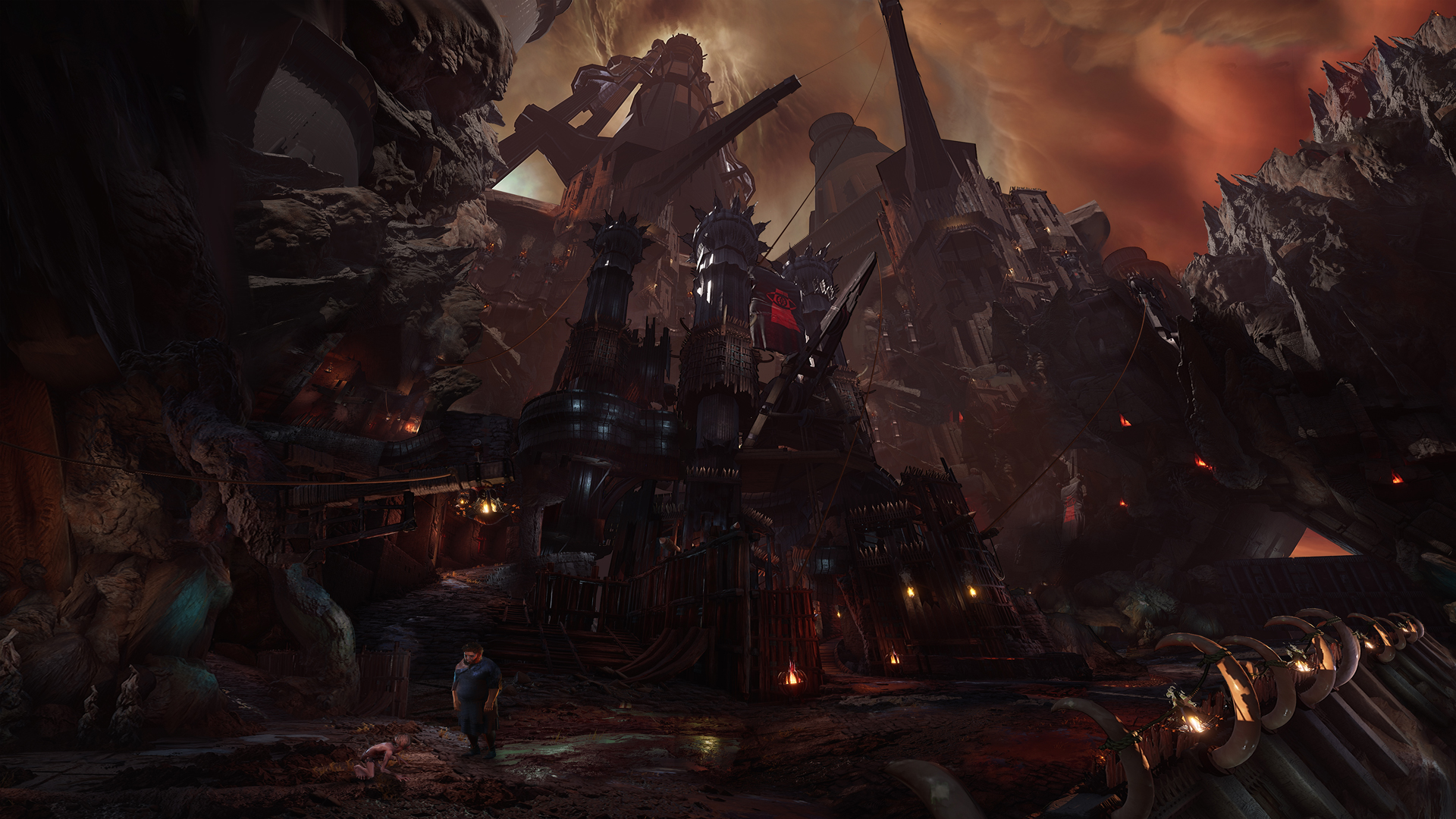
The demo I saw was from an earlier build of the game (meaning that there are still improvements and refinements to come), but it still gives me insight into just what you can do as Gollum and how his unique skill set comes into play in this adventure. As someone who has lived for hundreds of years, he's become an experienced freestyle climber who can nimbly jump from ledges, swing from poles, and leap with ease. You have a stamina bar which dictates how long you can hang from a certain spot, for example; any action Gollum can take that requires force will use up his stamina gauge.
At one point during the demo, Gollum is spotted by an Orc who begins to follow him. Since our protagonist is no match for a larger foe, we see how Gollum can also use the environment to lose his pursuer – by hanging from a wall, he's able to hide from sight, and the orc eventually gives up the chase. Gollum also uses his climbing prowess to navigate through the tower and reach high vantage points, letting him discern the whereabouts of Orcs and take in the vistas of the level.
Dark, smoky, and sprawling: the famous Barad-Dur tower in Mordor really is a sight to behold. It has an imposing height and size that really impresses upon you just how small Gollum is and how much danger you're really in when existing in this space. Daedalic designed the level with pillars and decorations that draw from Tolkein's vision and evoke the steep heights of the location; I can already see myself spending a lot of time up on high just soaking up the spectacle of it all.
With its impressive sense of depth and scale, exploration is an important part of The Lord of the Rings: Gollum, with several approaches and routes you can take to reach your goal. As I follow Gollum through the tower, I quickly get a sense for the kind of freedom you have when deciding how you want to reach the gate, with routes that are more parkour orientated and paths that require you to be stealthy. Thanks to our protagonist's nimbleness and small size, he can also get through crevices and tight spots that enemies can't reach, which can also be used to your advantage. With different avenues to choose from, you can play to your strengths and preferred playstyle, and it also adds an appealing replayability factor since you can try and get through each level in various ways.
Stick to the shadows

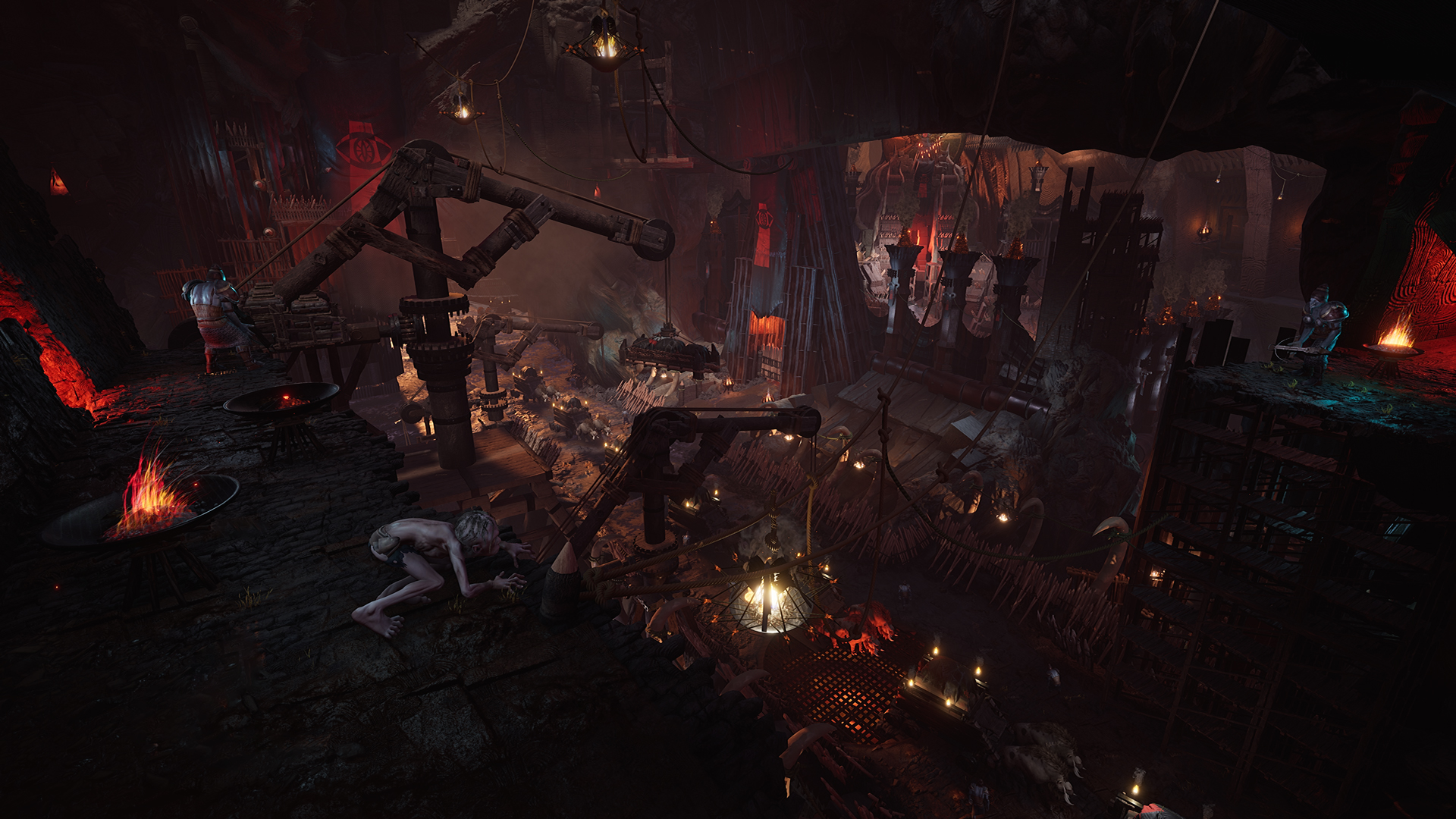

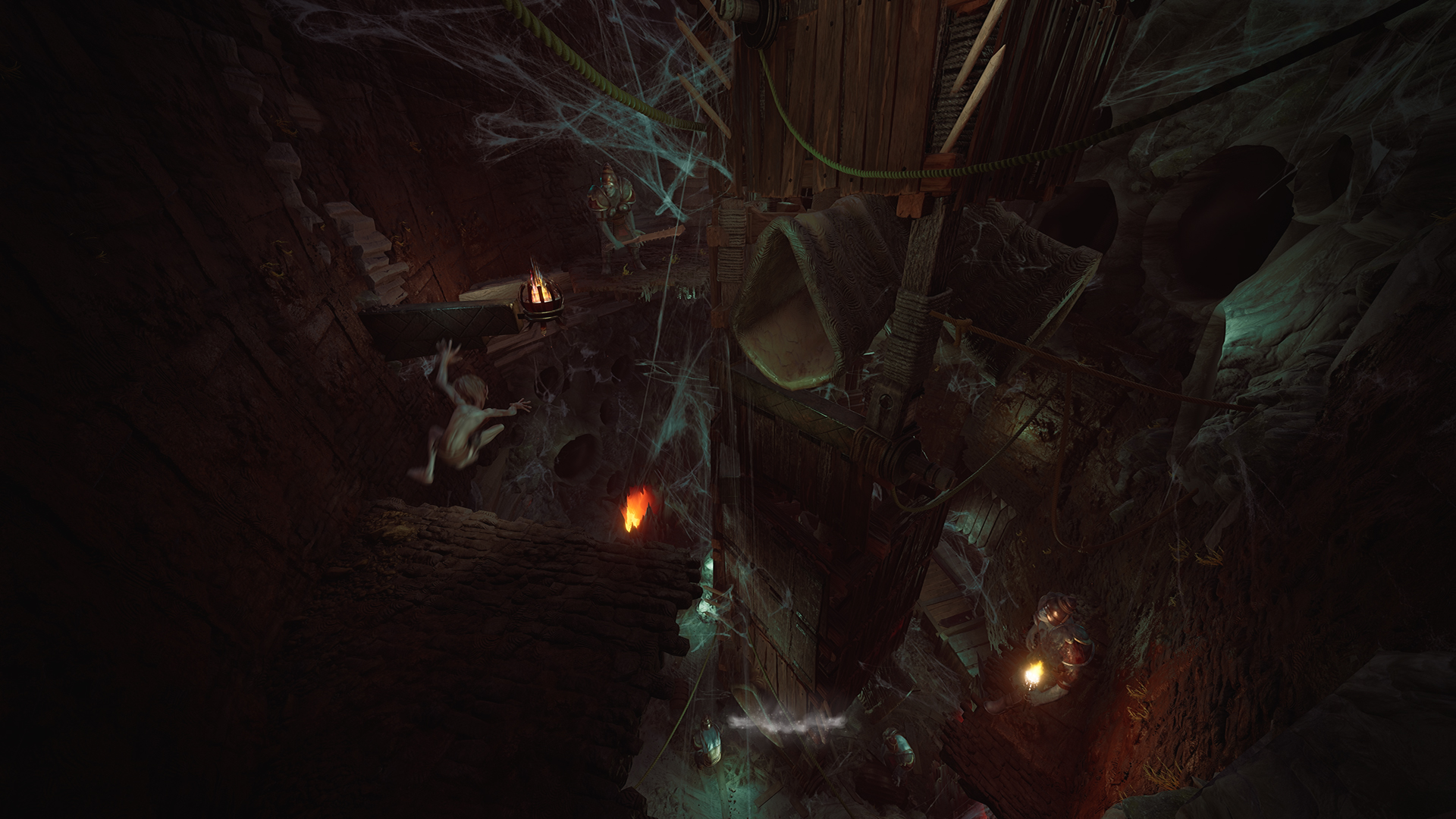
Climbing isn't the only strength Gollum has. He can also use his keen senses to navigate through the darkness and feel sounds, which allows for stealthy tactics. As well as hanging from a ledge to hide when spotted by a patrolling enemy, there are also other ways to use the environment to your advantage – in order to get the upper hand on your foes, you'll need to pay attention to the lighting around you.
Weekly digests, tales from the communities you love, and more
At one stage, Gollum has to get past a well-guarded area as he tries to reach the gate. Thanks to his aptitude for seeing in the dark, he can use the shadows and unlit spaces to get around enemies undetected. Since he can't hope to win in a fight against an Orc by charging in head-on, you're also able to take out enemies from behind. As you venture through a level, you may also encounter items you can use to cause a distraction if you're in a particularly tricky spot.
Being stealthy is crucial if you want to get through unscathed, and sound plays just as vital a part in your success as light. Everything Gollum does creates noise, from movements to actions, and you have to be ever mindful of what you're doing when foes are nearby. Enemies have a sound gauge that represents how alert they are to your presence as you try to inch past Orcs and get around obstacles. If you make too much noise and you happen to be detected, the enemy NPCs will also alert each other, which ups the chances of getting caught or being attacked.
Two sides
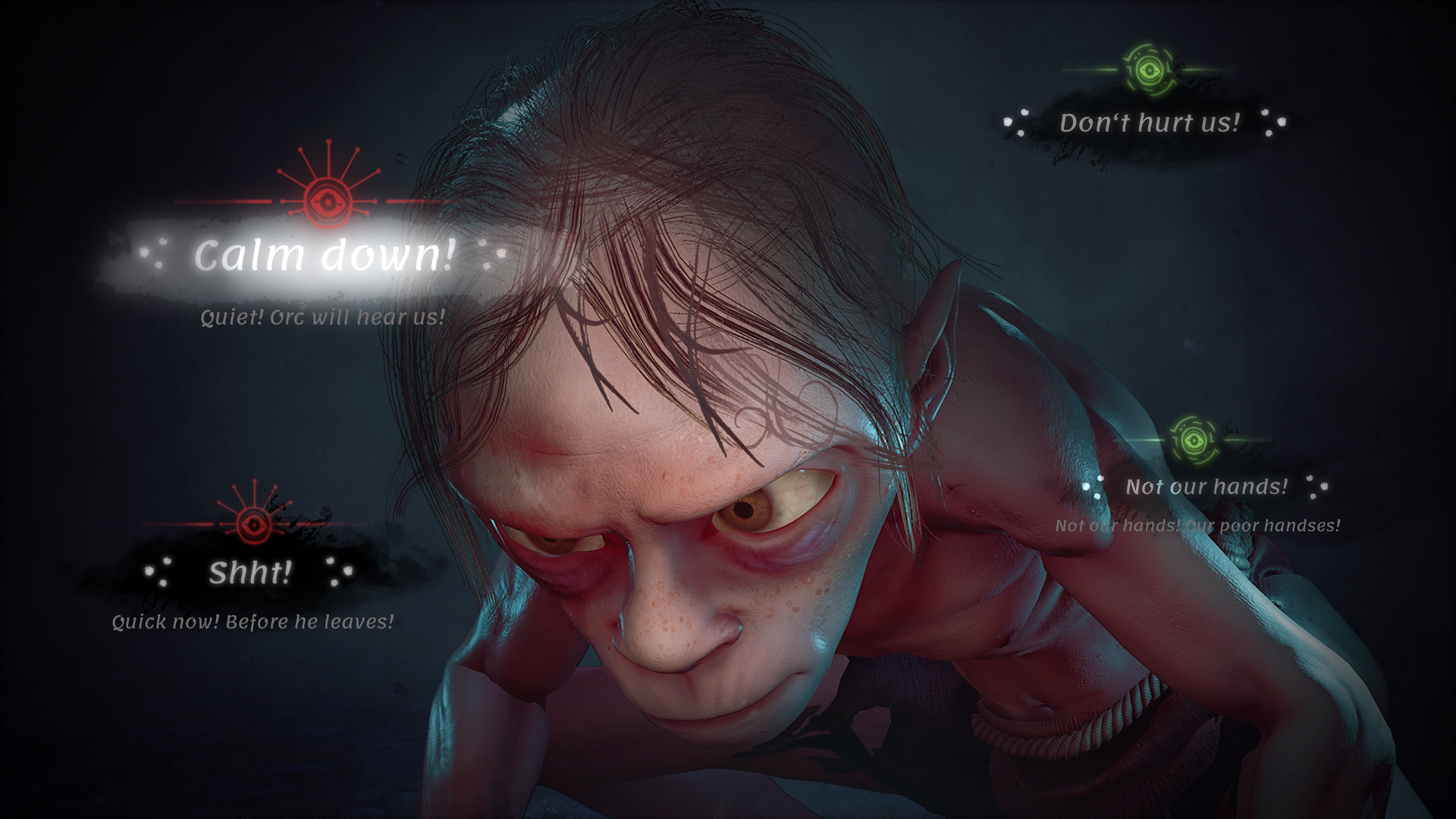
Outside of stealthy approaches and climbing, The Lord of the Rings: Gollum also looks set to explore his split personality. As a brief glimpse in the demo shows, there are certain situations that ask you to decide whether you want to lean into the harsher Gollum side, or the gentle Smeagol side of our protagonist. It's interesting to see one of the most famous scenes from The Two Towers explored through a game mechanic in this way.
As the game is still in active production, Daedelic notes that the mechanics of this system are subject to change in the final version. Regardless, it does present a compelling side to the game that lets you make choices that will have consequences further down the line. As an example, should you choose a response that's more in keeping with Smeagol's personality, it may close you off to certain choices later on that will only be available to Gollum, and vice versa.
What I find most interesting, though, is the moment Gollum expresses concern for the safety of another character called Grashneg. During your journey, you will sometimes encounter others who will join forces with you during a level and help you progress in different ways. Grashneg is able to help you through obstacles you wouldn't otherwise be able to get past - by using his strength to break through them - and, in return, Gollum can use his ability to navigate through the darkness to help Grashneg to safety. For just a brief moment, there's a softer side to Gollum that shines through, and I'm interested to see which other characters we'll meet.
At the end of the session, Gollum finally sees daylight after emerging from the tower, and Mount Doom can be seen looming on the horizon. The Lord of Rings: Gollum will take us beyond Mordor to places like the land of elves, with a diverse range of different levels and beautiful vistas, and other well-known characters are also said to make an appearance. As a big fan of The Lord of the Rings, I'm already drawn to exploring Middle-earth. While Gollum certainly isn't the first character I'd necessarily choose to do just that, after finally seeing how his unique personality and skills will play into the adventure, I'm excited to experience Tolkien's world from his perspective and maybe even see new sides to his character.
This new look at The Lord of the Rings: Gollum was revealed as part of the Future Games Show – Spring Showcase. It's expected to launch in 2022 for PC and next-gen consoles.

I started out writing for the games section of a student-run website as an undergrad, and continued to write about games in my free time during retail and temp jobs for a number of years. Eventually, I earned an MA in magazine journalism at Cardiff University, and soon after got my first official role in the industry as a content editor for Stuff magazine. After writing about all things tech and games-related, I then did a brief stint as a freelancer before I landed my role as a staff writer here at GamesRadar+. Now I get to write features, previews, and reviews, and when I'm not doing that, you can usually find me lost in any one of the Dragon Age or Mass Effect games, tucking into another delightful indie, or drinking far too much tea for my own good.


